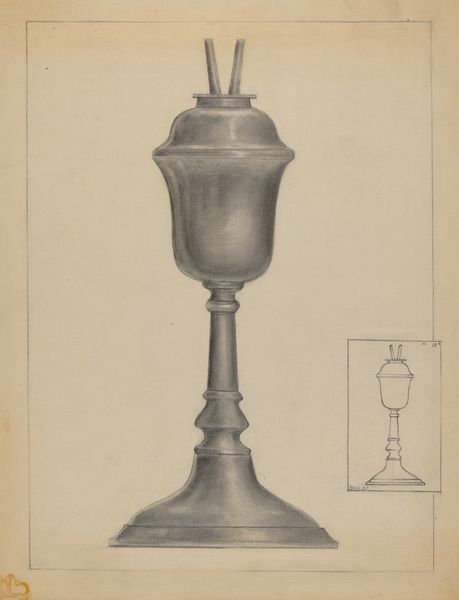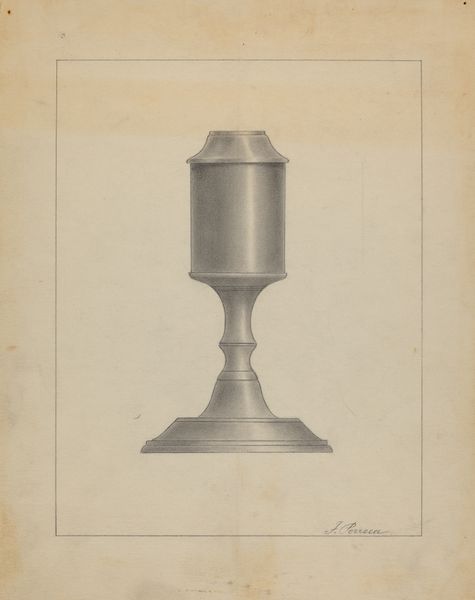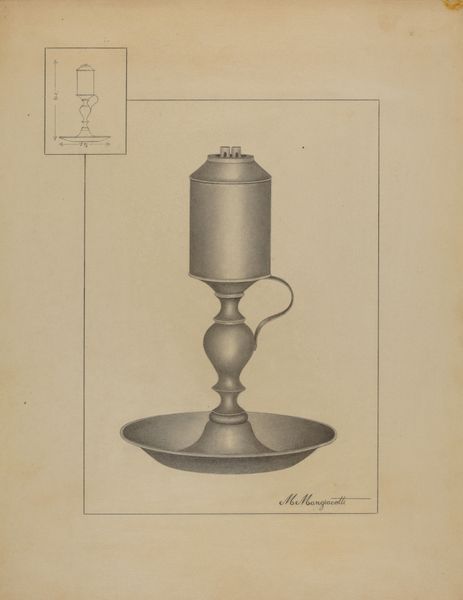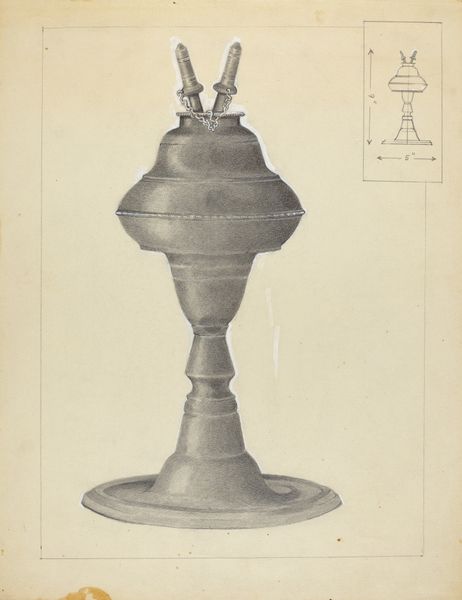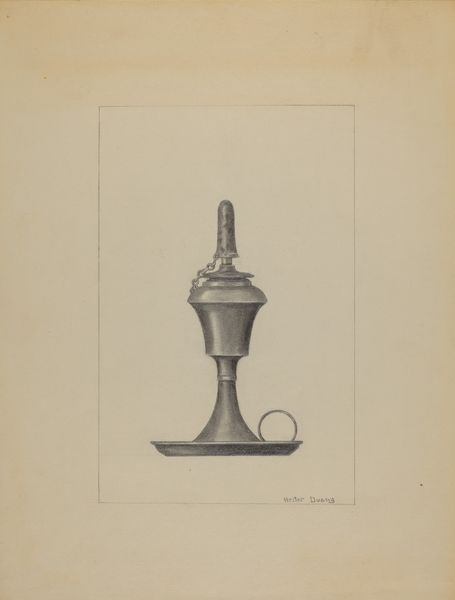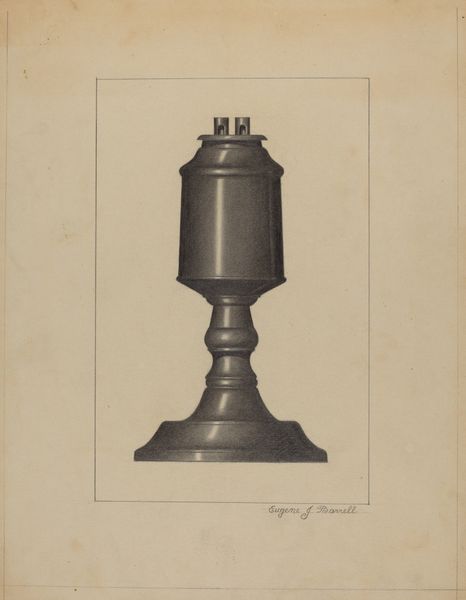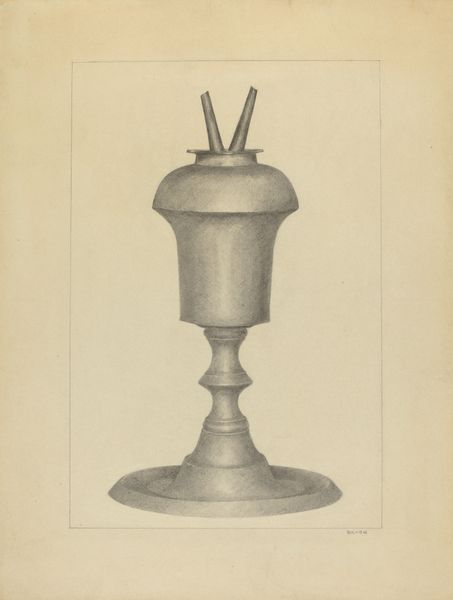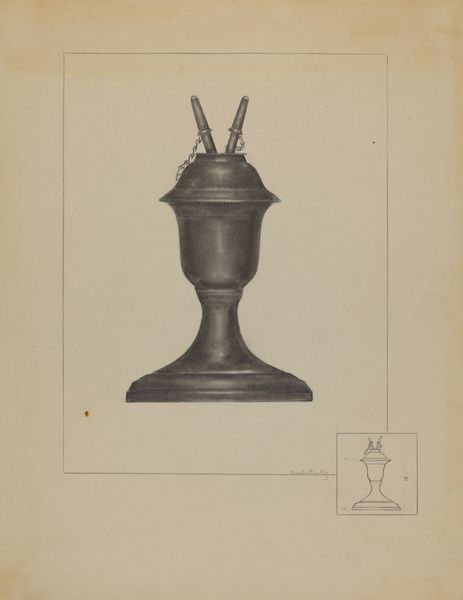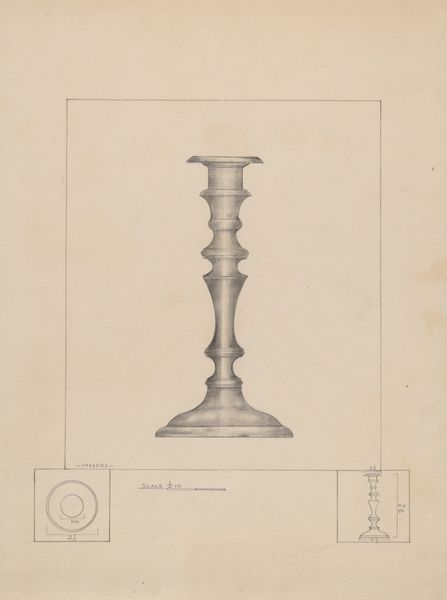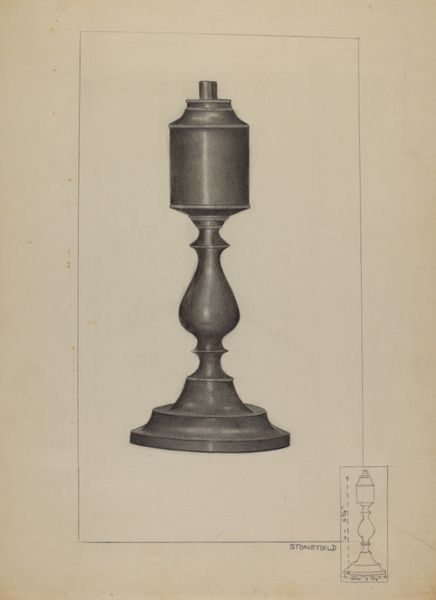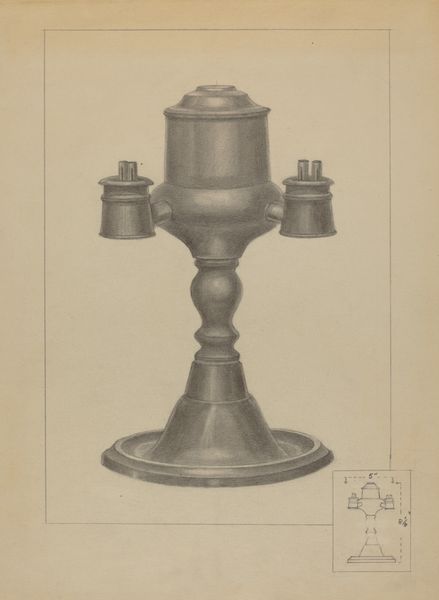
drawing, paper, pencil
#
drawing
#
paper
#
pencil
#
academic-art
Dimensions: overall: 29.9 x 23 cm (11 3/4 x 9 1/16 in.) Original IAD Object: 12" high; 5" inches in diameter
Copyright: National Gallery of Art: CC0 1.0
Curator: Here we have Matthew Mangiacotti’s "Lamp," a pencil drawing on paper that dates to around 1936. Editor: My immediate sense is how still and considered it feels. A little melancholic, even. The subdued grey tones, the precision of line... It suggests a careful observation of form. Curator: Yes, it's rendered in that almost academic style. There’s a clear focus on accurately representing the object's form, a technique going back centuries but likely referencing the revival of classicism in the interwar period. But it does make me wonder about what this lamp symbolizes. Is it a domestic comfort, a beacon of knowledge? Editor: I see a different angle. For me, it’s very much about labor – the unseen labor of manufacturing everyday objects. Look at the details; the shading that indicates material properties, suggesting a crafted surface rather than a mass-produced object. Someone sat and designed this, worked with their hands. It connects to broader histories of making, and I see Mangiacotti chronicling an element of industrial processes that often goes unrecognized. Curator: That's interesting, the idea of labor manifested in design itself, not simply in physical work, but perhaps in conceptual refinement, or skill acquisition, and the translation into rendered form... Even that little dimensional diagram speaks of someone laboring over the perfect construction of this design. It's definitely thought-provoking, if slightly eerie, but like so many things of the era, that kind of disquiet feels historically resonant. Editor: Exactly, it makes me appreciate that such renderings like these served an instrumental purpose. And in some sense that process still happens, though it’s filtered through technological mediation, no matter, though. Even seeing the object memorialized by the artists themselves emphasizes a deep respect for its functionality and artistry. Curator: It certainly highlights a beauty in the everyday, wouldn’t you agree? An almost meditative study of a mundane, though certainly elegantly proportioned, object. Editor: It makes me think about all the stages involved in making something this intricate, from initial design to eventual consumption. Curator: Well, that's certainly given me a new perspective. I will ponder the nature of hidden labor after that encounter. Editor: Agreed. And maybe give extra scrutiny to those often overlooked design drawings!
Comments
No comments
Be the first to comment and join the conversation on the ultimate creative platform.
